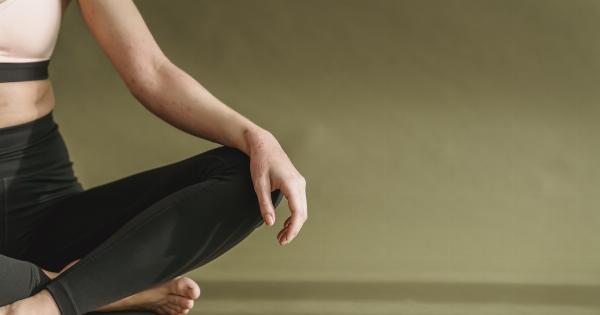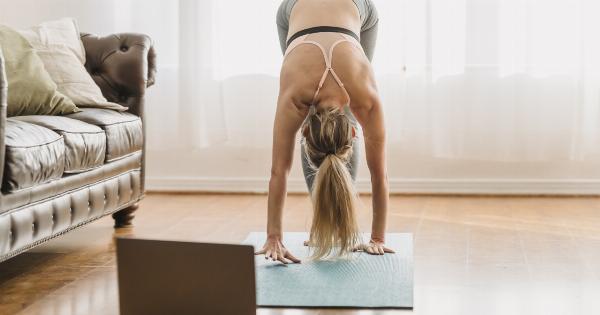Pregnancy is a beautiful journey that brings joy and anticipation. However, it can also be accompanied by various physical and emotional challenges.
One effective way to navigate through these challenges is by incorporating breathing exercises into your daily routine. Breathing exercises not only promote relaxation and calmness but also have numerous benefits for both mom and baby during pregnancy. In this article, we will explore some of the most effective breathing exercises for a healthier pregnancy.
The Importance of Breathing Exercises during Pregnancy
Breathing exercises play a vital role in maintaining good physical and mental health during pregnancy. They help to:.
- Reduce Stress and Anxiety: Pregnancy is a time of significant hormonal changes, which can sometimes lead to increased stress and anxiety. Breathing exercises help to activate the body’s relaxation response, reducing stress and promoting a sense of calm.
- Improve Oxygen Flow: Deep breathing techniques improve oxygen flow to both mom and baby. Sufficient oxygen supply to the body is essential for the growth and development of the baby, as well as for the overall well-being of the mother.
- Enhance Sleep Quality: Many pregnant women experience difficulties in getting a good night’s sleep. Practicing breathing exercises before bedtime can help relax the body and mind, promoting better sleep quality.
- Strengthen the Pelvic Floor: Certain breathing exercises focus on strengthening the pelvic floor. A strong pelvic floor is crucial during pregnancy and childbirth, as it supports the growing uterus and helps prevent issues such as urinary incontinence.
- Prepare for Labor: Learning and practicing different breathing techniques during pregnancy can help you prepare for labor. Proper breathing techniques can assist in managing pain, staying focused, and maintaining control during the birthing process.
10 Effective Breathing Exercises for a Healthier Pregnancy
Now, let’s explore ten effective breathing exercises that can greatly benefit expectant mothers during their pregnancy:.
1. Deep Belly Breathing
Deep belly breathing is a fundamental breathing exercise that helps you connect with your breath and increase oxygen intake. Follow these steps to practice deep belly breathing:.
- Find a comfortable and quiet place to sit or lie down.
- Place one hand on your chest and the other on your abdomen.
- Inhale slowly through your nose, allowing your belly to fully expand. Focus on filling your abdomen with air.
- Exhale gently through your mouth, making sure to empty your abdomen of air.
- Continue deep belly breathing for a few minutes, gradually increasing the duration as you become more comfortable.
2. Square Breathing
Square breathing is a simple technique that helps regulate breathing patterns and promote relaxation. Here’s how to practice square breathing:.
- Sit in a comfortable position and take a few deep breaths to relax.
- Inhale slowly and deeply for a count of four.
- Hold your breath for a count of four.
- Exhale slowly for a count of four.
- Hold your breath again for a count of four.
- Repeat this square breathing cycle for several minutes or until you feel calm and centered.
3. Alternate Nostril Breathing
Alternate nostril breathing helps balance the energy in the body and promotes a sense of harmony. Follow these steps to practice alternate nostril breathing:.
- Sit in a comfortable position with your spine straight.
- Place your left hand on your left knee, palm facing upward.
- Bring your right hand close to your face.
- Using your right thumb, gently close your right nostril and inhale deeply through your left nostril.
- At the top of your inhalation, use your right ring finger to close your left nostril.
- Release your right nostril and exhale through it.
- Inhale through your right nostril.
- At the top of your inhalation, close your right nostril with your right thumb and release your left nostril.
- Continue this pattern for several minutes, alternating between nostrils.
4. Ujjayi Breathing
Ujjayi breathing, also known as “ocean breath,” is a calming and energizing technique often used in yoga. Here’s how to practice ujjayi breathing:.
- Sit comfortably and relax your body.
- Inhale slowly through your nose, creating a gentle constriction at the back of your throat.
- As you exhale, constrict your throat slightly to create a soft hissing sound, similar to the ocean waves.
- Continue this slow, controlled breathing pattern for a few minutes, focusing on the sound and sensation of your breath.
5. Breath Counting
Breath counting is a technique that helps improve concentration and brings a sense of mindfulness. Follow these steps to practice breath counting:.
- Find a quiet place to sit comfortably.
- Take a few deep breaths to relax.
- Begin to count each breath silently in your mind, starting from one.
- When you reach ten, start over from one.
- If your mind wanders, gently bring your focus back to the counting.
- Continue this breathing and counting practice for five to ten minutes.
6. Progressive Muscle Relaxation
Progressive muscle relaxation combines deep breathing with muscle relaxation to promote overall relaxation and reduce tension. Follow these steps to practice progressive muscle relaxation:.
- Find a quiet and comfortable place to lie down.
- Start by taking a few deep breaths to calm your mind and body.
- Focus on one muscle group at a time, beginning with your toes.
- Slowly tense the muscles in your toes and hold for a few seconds.
- Release the tension and let the muscles relax completely.
- Moving upward, repeat this process with each muscle group, including your feet, calves, thighs, abdomen, arms, shoulders, and facial muscles.
- Throughout the exercise, maintain slow and steady breathing.
- After relaxing all muscle groups, take a few moments to enjoy the overall sensation of relaxation.
7. Diaphragmatic Breathing
Diaphragmatic breathing, also known as belly breathing, helps expand the lungs fully, allowing for increased oxygen intake and improved relaxation. Follow these steps to practice diaphragmatic breathing:.
- Lie down in a comfortable position or sit with your back straight.
- Place one hand on your chest and the other on your abdomen.
- Inhale deeply through your nose, allowing your abdomen to rise as you fill your lungs with air.
- Exhale slowly through your mouth, gently contracting your abdomen.
- Continue breathing deeply into your abdomen for several minutes, focusing on the rise and fall of your belly.
8. Release and Let Go Breath
The release and let go breath is a simple technique to release tension and promote relaxation. Follow these steps to practice the release and let go breath:.
- Find a quiet place to sit or lie down.
- Inhale deeply through your nose, imagining yourself inhaling positive energy and relaxation.
- Exhale through your mouth, picturing any tension or negativity leaving your body with each breath.
- As you exhale, audibly sigh or make a “whooshing” sound to enhance the release.
- Repeat this breathing exercise for a few minutes, allowing yourself to let go of any stress or worries with each exhale.
9. Cool Breath
The cool breath technique helps calm the mind and alleviate nausea or morning sickness. Here’s how to practice the cool breath:.
- Sit comfortably and close your eyes.
- Partially close your mouth, keeping your lips relaxed.
- Inhale slowly through your nose, imagining the cool air entering your body.
- Exhale gently through your mouth, envisioning warm air leaving your body.
- Repeat this cool breath cycle for several minutes, focusing on the sensation of coolness during inhalation and warmth during exhalation.
10. Golden Thread Breath
Golden thread breath is a calming and centering technique that can be particularly beneficial during times of stress or anxiety. Follow these steps to practice the golden thread breath:.
- Find a comfortable sitting position and relax your body.
- Close your eyes and take a few deep breaths to settle into the present moment.
- Bring your attention to your breath and imagine a golden thread attached to each inhale and exhale.
- As you inhale, visualize the golden thread expanding and lifting your breath upwards.
- As you exhale, imagine the golden thread gently guiding your breath downward.
- Continue this visualization, following the path of the golden thread with each breath, for several minutes.
Conclusion
Breathing exercises are a valuable tool for maintaining a healthier pregnancy.
Incorporating these techniques into your daily routine can help reduce stress, improve oxygen flow, enhance sleep quality, strengthen the pelvic floor, and prepare you for labor. Find the breathing exercises that resonate with you the most and make them a regular practice throughout your journey to motherhood.





























